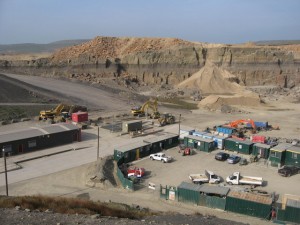“Sell in May and Stay Away” is a common saying and practice in investing. According to John Lung, an Associate Financial Advisor at Ameriprise Financial, “Sell in May and Stay Away” is, “the belief that starting at the beginning of May, people are less worried about their portfolios. In the summer people are on vacation and aren’t worried as much about the market,” said Lung. He continued saying, “with this people feel that the market will have more volatility and will go down. Last May was one of the worst. It’s not until school starts in September that people feel everyone’s starts concentrating back on their portfolios.”
Ben Muncher, a entrepreneur in downtown Atlanta, dismissed the notion of the “Sell in May and Stay Away” saying, “I didn’t really pay no mind to it, I felt the market would work itself out and good stocks would rise and bad stock would fall regardless.”
Tyne Hyslop, a branch manager at Raymond James, also dismisses the notion saying, “to put it into principal, I disagree. Through all my experience with handling money and investing I can say it’s hard to predict the market.”
Hyslip goes on to say, “the thing is, is that May is just a weaker period of the market. Also to flip that saying upside down, if you look at it, in May’s before presidential election like we are in now the market mostly always increases in anticipation for the future president.”
Five Stocks to “Sell in May and Stay Away”
I feel that Apple and Catepillar have reached their peeks and unless you buy an enormous amount of the stock the five dollar limbo won’t be that much of a gain. These stocks are selling currently at: AAPL – 346.61 and CAT – 112.94. These two stocks are out of my price range and unless you have a large bankroll they’re more than likely out of yours as well.
The next three are Goldcorp, Agnico Eagle Mines and Barrick Gold Corporation all of these are based out of Vancouver, Canada. The concern about all three of these stocks is that they are all over-owned. People gobbled them up because for a solid time precise materials such as gold, copper, and silver were on the rise. But now copper is going down, and with the “Sell in May and Stay Away” peopleare dumping these stocks driving down their prices.

Goldcorp (GG) is currenlty selling at $51.66, dropping nearly four dollars from Monday, one day. For Agnico (AEM) it suffered an even worse hit, trading as high as $69.31 on Monday and selling currently $64.20 per share. Barrick (ABX) experienced the least out of the three companies. Selling at $50.64 on Monday and currently selling at around $48.50 per share. All of these stocks are good but with the pending summer and the margins so much, it might be better to take a vacation yourself in the summer and get back in September. But if you feel confident and believe that in the third year of a presidency in anticipation for the future the market will flourish, then summer is the time to make your move.
1. Apple Inc. – Cupertino, California
2. Caterpillar Inc. – Peoria, Illinois
3. Goldcorp Inc. – Vancouver, Canada
4. Agnico Eagle Mines – Vancouver, Canada
5. Barrick Gold Corporation – Vancouver, Canada
View Sell in May in a larger map














